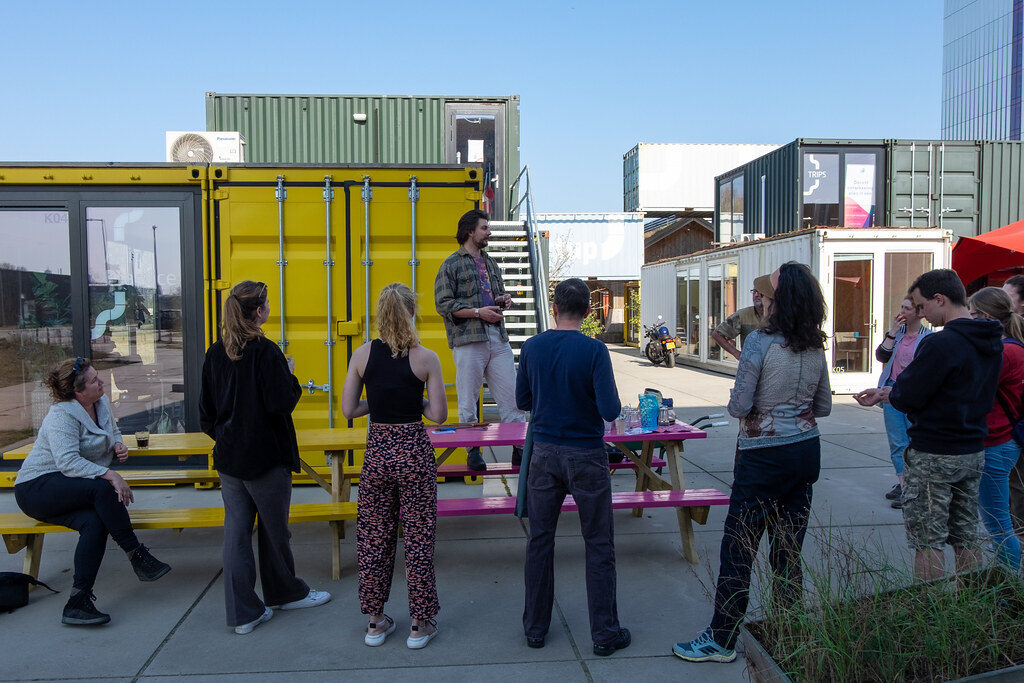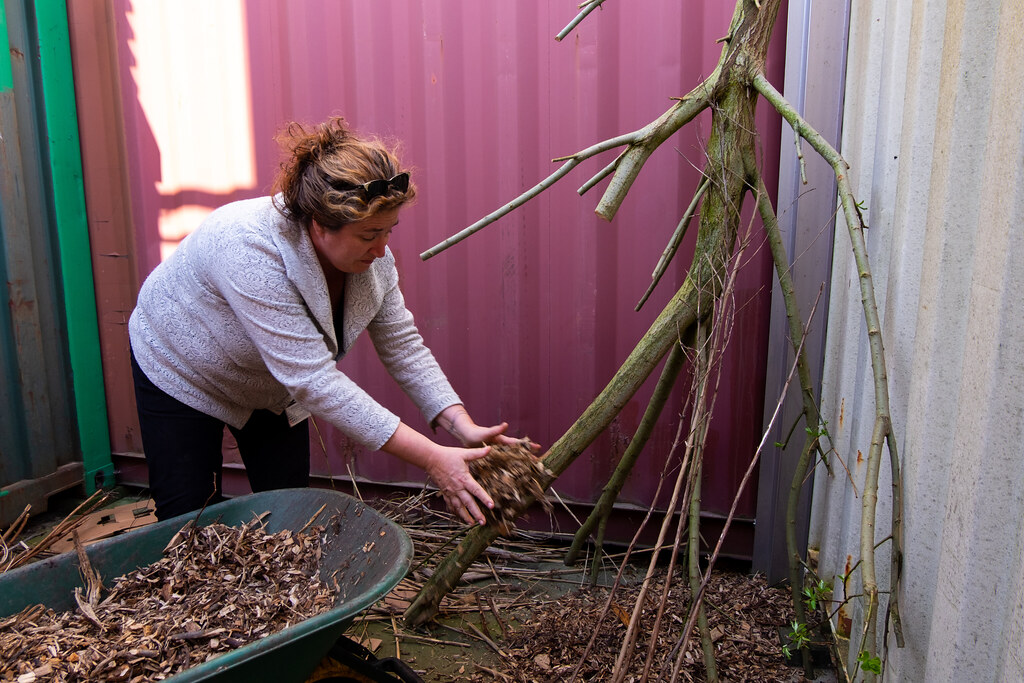The need for a ‘clean’, ‘safe’ and ‘easy to maintain’ environment is what motivates a lot of green management and urban maintenance practices. And thus it is common practice, by citizens and managing parties alike, to moan public green with weekly intervals, cut waterslides short and blow away any fallen leaves or branches. But who does this cleanliness serve? Mounds of rotting leaves, hollow branches and broken pavements are a feast for bacteria, fungi, worms and other micro-organisms. And as it turns out: this 'hidden biodiversity' with its additional pollen, seeds, poo and pee help to maintain the intricate urban ecosystems. For example, the worm makes the earth fertile with its faeces, and fungal threads of fungi use their threads to form an underground network with which they provide each other with food. Not to mention all the insects and vertebrates who serve as delicious meals for the larger animal wildlife in and above the ground.
During the ‘Making messy corners’ workshop, as part of the monthly DIT Eco practice program, the idea and need for human and urban cleanliness is challenged. By means of making ‘messy corners’ in vacant corners in the urban landscapes, participants of the workshop work together to build hide-outs for their more-than-human citydwellers. Under the supervision of a local ecological artist, participants are 1. introduced to lives of urban animal ‘wild life’ - such as the fox, cat, bird and rat, insects - such as the bee, butterfly and mosquito 2, and the vulnerable ‘hidden biodiversity’ that is needed to sustain their food patterns and ecosystems. Following this introduction, participants are invited to take another look at their surroundings and consider what discarded matter could be of use, as a way of challenging the assumption that a messy corner need to consist of ‘natural’ and ‘biological’ items only. While gathering wooden branches from a nearby community garden, collecting waste, clippings, straw an informal do-it-together setting is created which is followed by the installation of all the various elements on site. With the element of surprise that it is ‘that easy’ and ‘quick’ to support more-than-human communities in your daily environment. The workshop is concluded with a small round of suggestions, questions and taking inventory of expected species to inhabit the newly created niche.
Key discoveries
Biodiversity
- It is important that the messy corner is allowed time for development. While a couple of months are enough to invite spiders, some starting fungal networks and other small insects - it is preferred to keep the corner for several years so that other animals, plants and communities of organisms can really inhabit the area.
- Just like ‘us’, there are many organisms that favor human-made objects and materials as habitat. Therefore it is not necessary to only use ‘natural’ items in the making of a messy corner. In fact you could argue that a ‘messy corner’ is the perfect use for collected waste such as bricks, roof tile, wooden poles, plastic tubes and other construction materials found in your neighborhood.
- A messy corner needs continuous ‘repair’ - since the majority of dead organic matter will degrade over time ánd is food for the micro-organisms on site. Therefore a regular supply of matter is advised
- To avoid the risk of being seen as ‘real mess’ and thus being cleaned up by neighbors, facility managers and green managing parties it could be wise to either mention and discuss the making of a messy corner, or indicate it’s presence by means of a little sign.
Eco-practice
- The messiness of the process, with all it’s large branches, intermingling of human bodies who are trying to work in a small enclosed space and people chatting, asking questions and negotiating the placement and efficacy of their materials serves as the perfect backdrop for this effort. While being ‘a mess’ with hair and clothes filled with organic matter and engaging in ‘messy practices’ that feel un-organised and un-orchestrated the participants find themselves in a more more-than-human mindset able to notice their surroundings in a different way
- It is interesting to note, and discuss the attitude of decoration, since you will find that some participants can’t resist the urge to ‘make a messy corner pretty’ and use barriers to indicate the boundary between ‘messy corner’ and the rest of the environment and indicate the ‘garden potential’ of the mess that is created.
Next steps
- In a second iteration, the regular repair and monitoring of the ‘messy corner’ by means of 1. Counting species, either with an ecology expert or through an identification app 2. photography / drawing / fieldnote taking or other ‘capturing’ practice can be included in the organization. With ideally a few participants taking on this task as guardian of the ‘messy corner’.
Authors: Rosalie Bak, Waag
- Do-It-Together Eco-practices
- Wild and cultivated spaces




